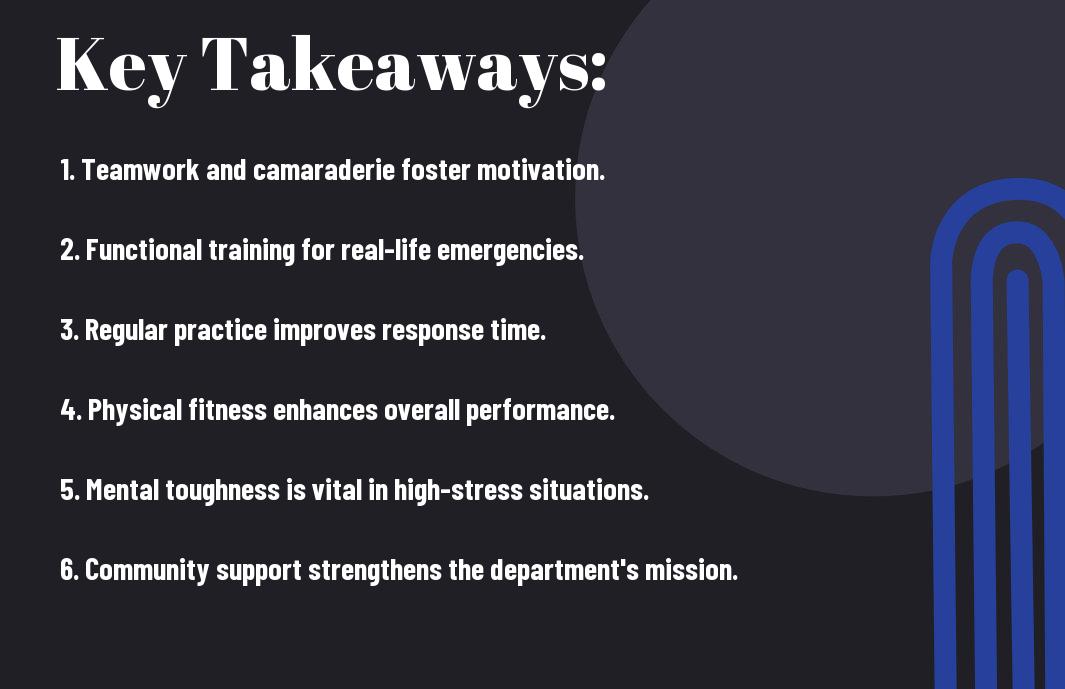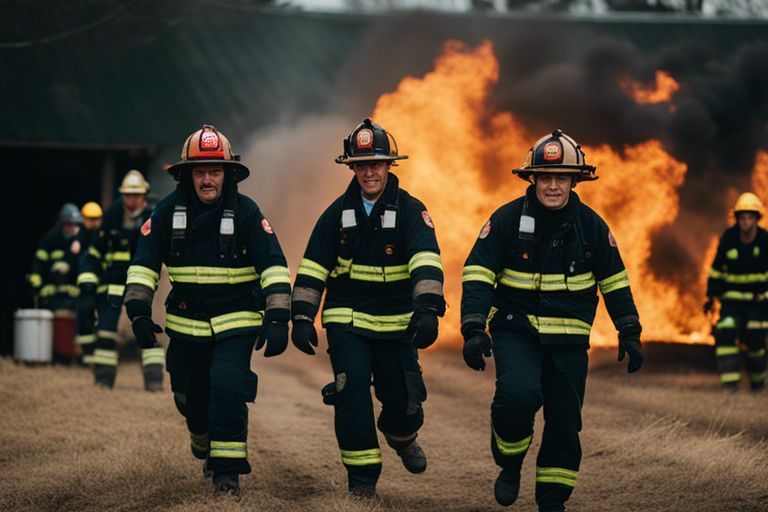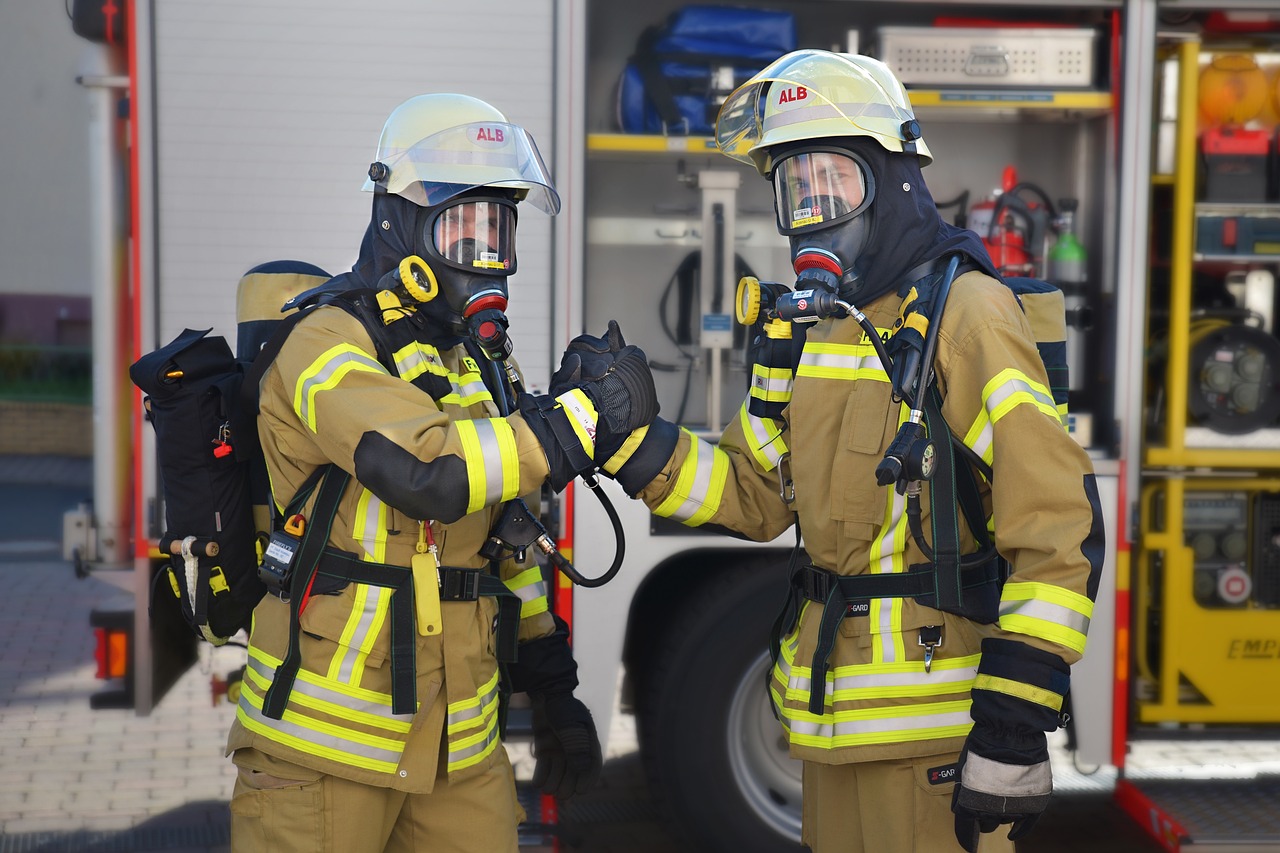Over the years, the Volunteer Fire Department has honed the secret to physical fitness that keeps their members in top shape for emergency response. In this blog post, you will uncover the key strategies that the Volunteer Fire Department employs to maintain peak physical condition and save lives efficiently. By adopting these practices, you can also enhance your own fitness levels and be prepared for any challenges that come your way. Let’s examine into the world of the Volunteer Fire Department and unlock the secrets to physical fitness like never before.
The Importance of Physical Fitness
A strong emphasis on physical fitness is important for members of the volunteer fire department. You must be in top physical shape to meet the demands of the job and ensure the safety of yourself and others. Maintaining a high level of fitness not only improves your performance on the job but also enhances your overall health and well-being.
The Demanding Nature of Firefighting
Any firefighter will tell you that the nature of the job is physically demanding. From carrying heavy equipment to climbing stairs in full gear, your body is constantly put to the test. Ensuring that you are in good physical condition will help you meet these challenges head-on and perform effectively in emergency situations.
The Consequences of Poor Physical Fitness
Firefighting is a high-stress, physically demanding profession, and poor physical fitness can have serious consequences. Being unfit can impair
Demanding physical fitness standards may seem intimidating, but they are crucial for ensuring your safety and effectiveness as a firefighter. By prioritizing your physical fitness and maintaining a regular exercise routine, you can improve your performance on the job and reduce the risk of injury. Recall, your health and well-being are your most valuable assets in this demanding line of work.
The Volunteer Fire Department’s Approach
Some volunteer fire departments have a unique approach to physical fitness that sets them apart from traditional gym routines. By focusing on functional strength, endurance, and agility, firefighters are able to meet the demanding physical challenges of their job with ease.
A Holistic View of Fitness
Viewing fitness through a holistic lens, the volunteer fire department emphasizes the importance of overall well-being. It’s not just about lifting weights or running on a treadmill; it’s about building a strong foundation that can support you in all aspects of your life.
Fostering a Culture of Wellness
Volunteer fire departments prioritize the health and well-being of their members, creating a supportive environment where everyone is encouraged to prioritize their physical and mental wellness. This culture of wellness extends beyond the station, influencing firefighters to make healthy choices even when they are off-duty.
When you join a volunteer fire department, you become part of a community that values your health and believes that taking care of yourself is imperative not only for your own well-being but also for the safety of your team.
Building Strength and Endurance
While firefighting requires a unique set of physical abilities, building strength and endurance is necessary for performing effectively in this demanding profession. Functional training for firefighting tasks is crucial to prepare your body for the challenges you may face on duty.
Functional Training for Firefighting Tasks
Tasks such as carrying heavy equipment, climbing ladders, and rescuing individuals from dangerous situations require specific muscle groups to be strong and well-conditioned. Incorporating exercises like deadlifts, squats, and pull-ups into your workout routine can help you develop the functional strength needed to perform these tasks efficiently.
Cardiovascular Exercises for Peak Performance
An necessary component of your training regimen should focus on cardiovascular exercises to enhance your endurance and cardiovascular health. Activities like running, cycling, and HIIT (High-Intensity Interval Training) can help improve your cardiovascular capacity and ensure you have the stamina to handle prolonged firefighting operations.
Functional cardiovascular exercises mimic the physical demands of firefighting, helping you prepare for the intense bursts of activity required during emergencies. By incorporating exercises that elevate your heart rate and challenge your respiratory system, you can build the endurance necessary to sustain peak performance throughout challenging situations.
Progressive Overload for Continuous Improvement
Peak physical fitness is not a static state but a continuous journey of improvement. Exercises that incorporate progressive overload, such as increasing weights gradually or adding repetitions over time, are instrumental in pushing your body beyond its current limits and fostering growth. This gradual progression is key to increasing your strength and endurance over time, ensuring that you are always prepared for the physical demands of firefighting.
Flexibility and Mobility
Not only is physical fitness crucial for firefighters, but so is flexibility and mobility. In order to respond effectively to emergencies and perform well during training, you need to focus on improving your range of motion and maintaining flexibility in your muscles.
The Role of Stretching in Injury Prevention
Stretching plays a vital role in injury prevention for firefighters. By incorporating regular stretching exercises into your routine, you can help reduce the risk of muscle strains, sprains, and other injuries. Stretching increases blood flow to your muscles, improves joint health, and enhances overall flexibility. This means that when you need to respond quickly to a crisis, your body is prepared and less prone to injury.
Improving Range of Motion for Enhanced Performance
On top of injury prevention, improving your range of motion can also lead to enhanced performance. When you have a greater range of motion in your joints, you can perform tasks more efficiently and with greater ease. This is vital for firefighters who often need to navigate tight spaces, carry heavy equipment, and perform physically demanding tasks. By working on your flexibility and mobility, you can improve your overall performance and excel in your role as a firefighter.
Understanding the importance of flexibility and mobility in your physical fitness routine can ultimately make you a better firefighter. By dedicating time to stretching and improving your range of motion, you can reduce the risk of injuries, enhance your performance, and be better prepared to respond to emergencies effectively.
Nutrition and Hydration
Fueling the Body for Optimal Performance
To perform at your best as a volunteer firefighter, you need to ensure that you are fueling your body with the right nutrients. Your activity levels are high, and your body needs the right balance of carbohydrates, protein, and healthy fats to sustain your energy levels during emergencies. Make sure to include plenty of fruits, vegetables, whole grains, lean proteins, and good fats in your diet. These will not only provide the necessary energy but also support muscle recovery after intense physical exertion.
Staying Hydrated in High-Stress Situations
Hydration is key to maintaining optimal performance during high-stress situations. Your body loses a significant amount of fluids while battling fires or responding to emergencies. Remember to always carry a water bottle with you and take frequent sips to stay hydrated throughout the day. Dehydration can lead to decreased focus, muscle cramps, and even heat stress. By keeping yourself well-hydrated, you can ensure that your body functions efficiently when you are needed the most.
The importance of staying hydrated cannot be stressed enough. In emergency situations, your body’s fluid requirements increase, and failure to replenish them can lead to serious consequences. When you are actively engaged in firefighting tasks, make a conscious effort to drink water regularly. This simple yet vital habit can make a significant difference in your performance and overall well-being during challenging moments.
Based on the article title ‘The Volunteer Fire Department’s Secret To Physical Fitness’, we can infer that as a volunteer firefighter, maintaining proper nutrition and hydration is necessary to your physical fitness and overall performance on duty.
Mental Toughness and Resilience
After learning about the importance of physical fitness in the fire service, it’s time to probe into the significance of mental toughness and resilience. According to Physical Fitness Initiatives in the Fire Service – Barriers …, mental strength plays a crucial role in handling the psychological demands of firefighting.
The Psychological Demands of Firefighting
For firefighters, the psychological demands of their profession are immense. Dealing with high-stress situations, witnessing traumatic events, and making split-second decisions can take a toll on your mental well-being. It’s important to recognize these challenges and actively work on building mental resilience to cope with the demands of the job.
Building Mental Resilience through Training and Teamwork
The key to developing mental resilience lies in training and teamwork. Working together as a cohesive unit, supporting each other through difficult scenarios, and consistently practicing mental exercises can significantly enhance your ability to handle stressful situations effectively.
It is through training and building a strong support system within your team that you can cultivate the mental resilience needed to thrive in the demanding environment of the fire service. By honing your mental toughness, you not only improve your performance on the job but also safeguard your well-being in the face of challenging circumstances.

Final Words
Conclusively, the volunteer fire department’s secret to physical fitness lies in their commitment to regular training and a sense of community. By participating in drills, exercises, and emergency response scenarios, you not only build your physical strength and endurance but also foster a strong bond with your fellow volunteers. This camaraderie and shared sense of purpose can be powerful motivators to stay active and maintain a healthy lifestyle. So, if you’re looking to boost your fitness levels and be part of a close-knit team, consider joining your local volunteer fire department and experience the benefits firsthand.



